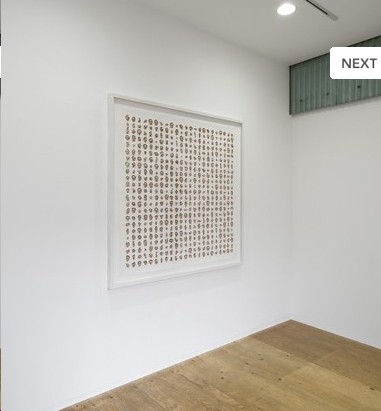Tom Friedman
28 Mar - 02 May 2009
TOM FRIEDMAN
"Not Something Else"
Bubble gums, toilet paper, toothpicks, plastic drinking straws.... Tom Friedman transforms these ordinary, everyday materials into unexpected and beautiful artworks. Friedman's such art making has roots in a breakthrough that he experienced when he was a graduate student. Having realized that art should not be defined by its formats, he emptied his studio completely, painted everywhere white, and lighted the space with fluorescent light fixtures on the ceiling. In this almost like a sensory-depriving space, Friedman started his new explorations by bringing objects one by one, once again.
In Untitled (2000), he sprinkled and laid out pink eraser shavings in a circle on the floor. The edge of the circle looks like a nebula. With this work, Friedman bestows power of turning themselves into an artwork on physical properties of a non-art material or object (eraser shavings, in this case). In 1,000 Hours of Staring (1992-97), a blank piece of paper stared by himself for 1,000 hours, Friedman raises questions about the boundaries that have been drawn around artistic activities.
"Not Something Else"
Bubble gums, toilet paper, toothpicks, plastic drinking straws.... Tom Friedman transforms these ordinary, everyday materials into unexpected and beautiful artworks. Friedman's such art making has roots in a breakthrough that he experienced when he was a graduate student. Having realized that art should not be defined by its formats, he emptied his studio completely, painted everywhere white, and lighted the space with fluorescent light fixtures on the ceiling. In this almost like a sensory-depriving space, Friedman started his new explorations by bringing objects one by one, once again.
In Untitled (2000), he sprinkled and laid out pink eraser shavings in a circle on the floor. The edge of the circle looks like a nebula. With this work, Friedman bestows power of turning themselves into an artwork on physical properties of a non-art material or object (eraser shavings, in this case). In 1,000 Hours of Staring (1992-97), a blank piece of paper stared by himself for 1,000 hours, Friedman raises questions about the boundaries that have been drawn around artistic activities.

